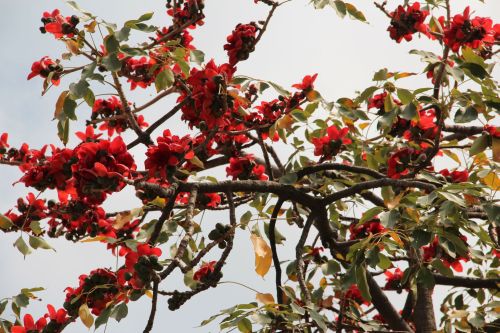An Introduction to Phenology
An Introduction to Phenology
CHAN Ying-wa
March 2013
"The duck knows first when the river becomes warm in spring", "A falling leaf heralds the coming of autumn". The above two Chinese sayings describe the phenological phenomena of the onset of spring and autumn respectively.
Since the ancient times, humans have been taking phenological observations for various agricultural purposes. In the historical Hellenistic period two thousand years ago, people in Athens have already started making phenological observations. During the Zhou and Qin periods in China, phenological calendar was in place to guide rulers determining when to order peasants ploughing the land. In Japan, the time of cherry blossoms (Sakura) each year was recorded and such practice could be dated back to the early 9th Century in the Tang dynasty. Up till now, phenological observations of cherry blossom have been taken for over 1,200 years, the longest record in the world. From the 18th to 20th Centuries, very organized networks for systematic phenological observations have been developed in China, Europe, United States and Russia. These observations are very useful for the development of the science of Phenology.
Phenology is primarily a subject of studying the words of our nature, covering areas like the study of the growth, blossom and withering of plants, the timing of bird migration and insect activities, etc., with a view to understanding the change of climate and its impact on the ecosystem. Phenological observations have to be taken at fixed locations, fixed time and based on the same kind of natural activity. The recording format should also be standardized for easy comparison. Different regions have different phenological patterns depending on their latitudes, longitudes and heights. Even at the same location, the phenological pattern observed in the past may be quite different from the present. According to past studies, it may exhibit periodic variations and can even be affected by solar activities.
Entering the 21st Century, the influence of the Greenhouse Effect on the Earth is becoming more apparent. Phenological observations are essential as they can enhance our understanding of the impact of global warming on the biosphere. Looking around, numerous incidents have occurred which may reflect such impact. For examples, several years ago large herds of reindeers living near the Arctic Circle were drowned during their migration in autumn and winter, suggesting that the cause was due to the cracking of the ice layer on the icy lake which might not have grown thick enough; a tendency for early occurrence of cherry blossoms in Japan; large areas of pine forest in the mid-latitude regions were damaged by pine beetles which hatched out earlier and reproduced in vast quantity due to warm winter or hot summer; it was even observed that the blossoms of Kapok trees during winter in Hong Kong had changed with many green leaves still attached to the trees, while the trees used to be rather "bald" in the old days (see Figure 1). These observational facts have reminded us that our natural environment might have silently entered a stage of irreversible change.

Figure 1: The blossom of a Kapok tree at the roadside of the Argyle Street (photo taken by the author on 23 February 2013)
References:
[1] 王達文、李長青、王鵬、關建華,《氣象大使說天氣》,氣象出版社,2006。(Chinese only)
[2] Hsu, S.H., "A Review of the Phenology from the Global Warming Tendency", Crop, Environment & Bioinformatics 4:300-344, 2007.
[3] 竺可楨,《天道與人文》,北京出版社,2011。(Chinese only)
[4] "Phenology",Wikipedia.
[1] 王達文、李長青、王鵬、關建華,《氣象大使說天氣》,氣象出版社,2006。(Chinese only)
[2] Hsu, S.H., "A Review of the Phenology from the Global Warming Tendency", Crop, Environment & Bioinformatics 4:300-344, 2007.
[3] 竺可楨,《天道與人文》,北京出版社,2011。(Chinese only)
[4] "Phenology",Wikipedia.